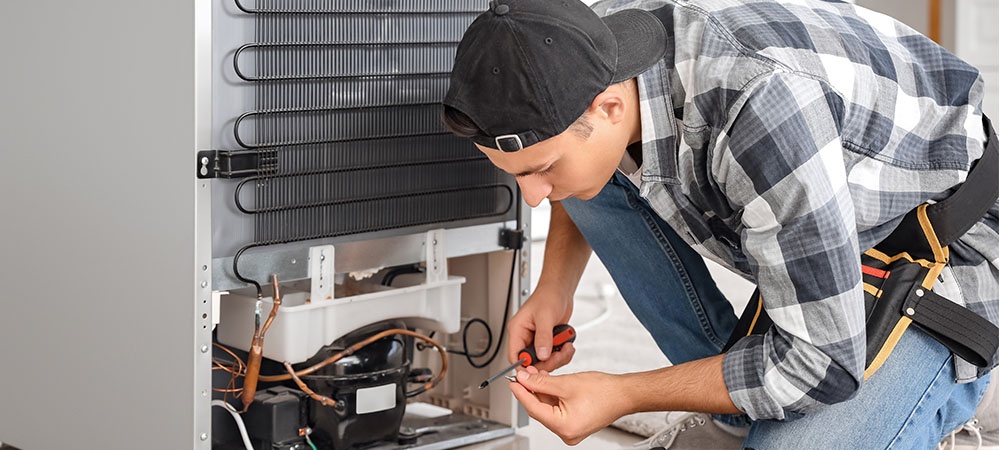Discover essential tips for repairing electrical devices and tackling appliance malfunctions. Learn how to troubleshoot and fix common issues.

Electrical devices play a crucial role in our daily lives, but they can occasionally malfunction, leaving us in a state of frustration. Knowing how to tackle appliance malfunctions and repair electrical devices can save time, money, and the hassle of replacing them altogether. In this blog post, we will provide essential tips for repairing electrical devices, empowering you to troubleshoot and fix common issues effectively.
Understanding Electrical Device Malfunctions
Before attempting any repairs, it’s important to have a basic understanding of how electrical devices work and the potential causes of malfunctions. Common issues include:
- Power Supply Problems: Faulty power cords or issues with electrical outlets can cause devices to malfunction or fail to turn on.
- Wiring Issues: Loose or damaged wires can disrupt the flow of electricity and lead to device malfunctions. Wiring problems may be particularly prevalent in older appliances.
- Component Failure: Over time, components within an electrical device can wear out or become damaged, leading to malfunctions. Examples include blown fuses, burned-out capacitors, or malfunctioning sensors.
- Poor Maintenance: Lack of proper cleaning and maintenance can contribute to the deterioration of electrical devices, leading to malfunctions over time.
Tips for Repairing Electrical Devices
When facing an electrical device malfunction, consider the following tips to troubleshoot and resolve common issues:
- Check Power Supply: Ensure that the power cord is properly connected and the electrical outlet is working. Test the outlet by plugging in another device to confirm if the problem lies with the device or the power supply.
- Inspect Wiring: Examine the device’s wiring for any visible signs of damage, such as frayed or exposed wires. If found, turn off the device and unplug it before attempting to repair or replace the damaged wiring.
- Refer to the User Manual: Consult the user manual or manufacturer’s website for troubleshooting guides specific to your device. These resources often provide step-by-step instructions for common issues and may include diagrams or videos.
- Utilize Online Resources: Online forums, tutorials, and videos can be valuable resources for diagnosing and repairing electrical device malfunctions. Websites dedicated to DIY repairs often provide detailed instructions and community support.
- Safety First: Prioritize safety by disconnecting the device from the power source before attempting any repairs. If unsure or uncomfortable with the repair process, consult a professional technician to avoid potential hazards.
- Basic Tools: Invest in a basic set of tools necessary for electrical repairs, including screwdrivers, pliers, wire strippers, and a multi-meter to test for continuity and voltage.
- Clean and Maintain Regularly: Preventive maintenance can extend the lifespan of electrical devices. Regularly clean dust, debris, and other contaminants from vents, filters, and moving parts. Follow manufacturer guidelines for cleaning specific devices.
- Consider Professional Help: Complex repairs or issues involving high-voltage systems should be left to trained professionals. Attempting repairs beyond your skill level can result in further damage or personal injury.
Fire Extinguisher: Essential for Kitchen Safety
While we’re discussing electrical device malfunctions, it’s crucial to mention the role of a fire extinguisher in kitchen safety. When dealing with appliances, especially in the kitchen, the risk of a fire breakout due to electrical malfunctions is a reality we must prepare for. A fire extinguisher in the kitchen acts as a first line of defense in the event of a fire caused by a malfunctioning appliance.
It’s important to choose an extinguisher rated for kitchen use, typically a Class K extinguisher, which is designed to combat grease fires commonly seen in kitchen scenarios. Remember, safety should always be your top priority when dealing with electrical devices. Regular maintenance and a keen eye can prevent most issues, but in case of emergencies, a fire extinguisher can be a life-saving tool.
Knowing how to tackle appliance malfunctions and repair electrical devices can save you time, money, and the frustration of dealing with faulty appliances. By understanding the causes of malfunctions and following essential tips such as checking the power supply, inspecting wiring, referring to user manuals, utilizing online resources, prioritizing safety, having basic tools, performing regular maintenance, and knowing when to seek professional help, you can effectively troubleshoot and fix common issues. Empower yourself with the knowledge and skills to keep your electrical devices running smoothly and avoid unnecessary replacements.